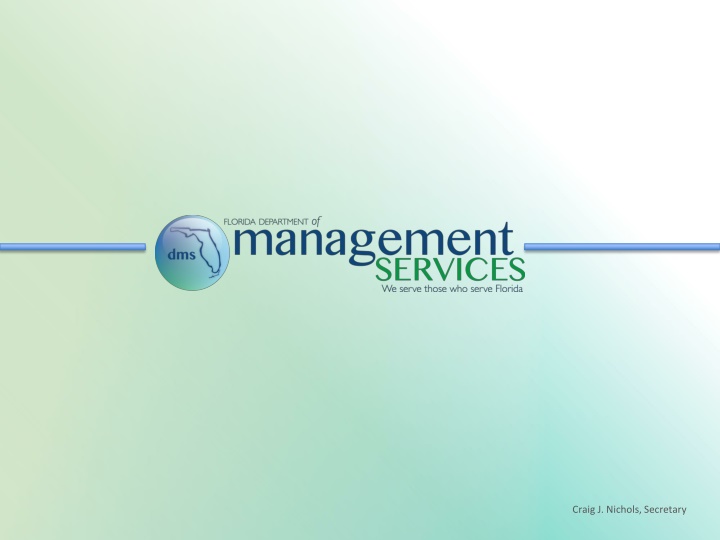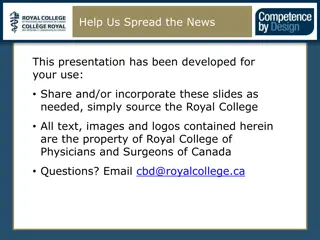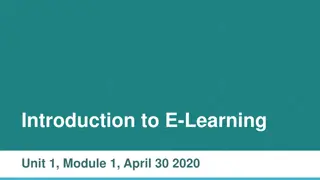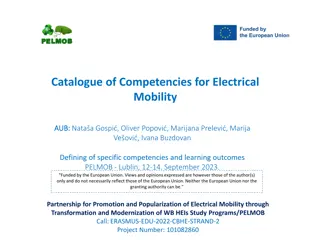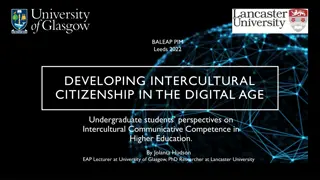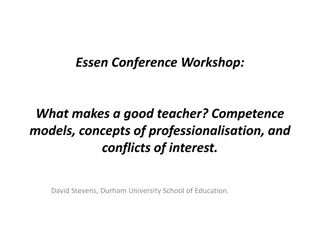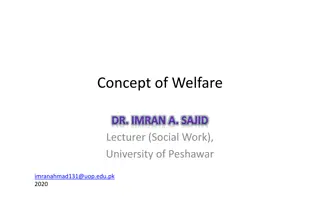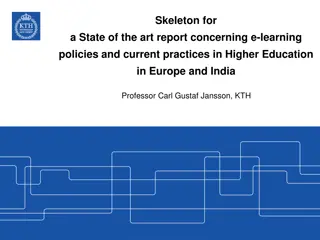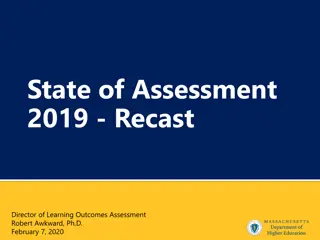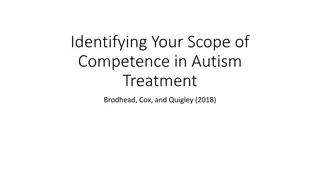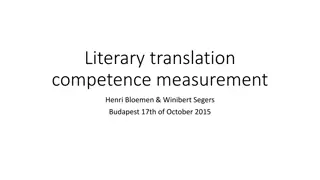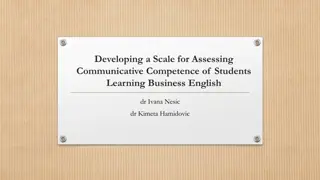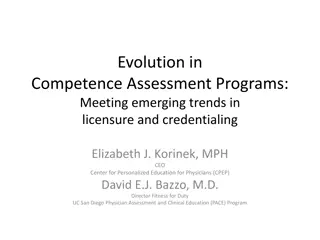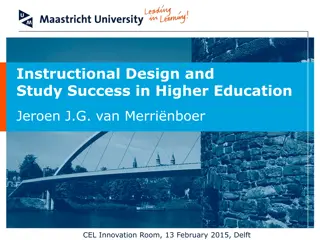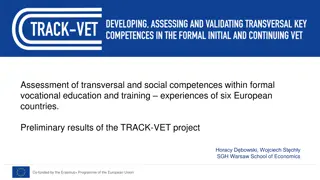Competence-Based Learning Assessment Model in Higher Education Institutions 2018
This working paper discusses a competence-based learning assessment model in higher education institutions, focusing on dimensions and criteria such as legal and administrative context, institutional context, degree planning process, course planning process, teaching and assessment, and revision and improvements at both course and degree levels.
Download Presentation

Please find below an Image/Link to download the presentation.
The content on the website is provided AS IS for your information and personal use only. It may not be sold, licensed, or shared on other websites without obtaining consent from the author.If you encounter any issues during the download, it is possible that the publisher has removed the file from their server.
You are allowed to download the files provided on this website for personal or commercial use, subject to the condition that they are used lawfully. All files are the property of their respective owners.
The content on the website is provided AS IS for your information and personal use only. It may not be sold, licensed, or shared on other websites without obtaining consent from the author.
E N D
Presentation Transcript
The State of E-Rate: What Does it Mean for the State of Florida? Bridget Duff State E-Rate Coordinator Division of Telecommunications, DMS
Overview of E-Rate Program Began January 1998 Eligible K-12 schools and libraries receive discounts of 20% - 90% on eligible: Priority 1: Connectivity Telecommunications Internet Access Priority 2: Internal Infrastructure Internal Connections IC Maintenance
Overview of E-Rate Program Funding Year: July 1- June 30 Annual Process: Procurement Application Review Decision Invoicing $$$ Need for E-Rate to be considered in your procurement processes RFP/RFQ Competitive bidding Eligible Services Contracts
Florida Funding Commitments % National Total Funding Year State Total National Total SLD Reports 2013 $3,992,793.84 $175,443,228.50 2.3% Wave 5 2012 $107,037,155.76 $2,464,490,541.95 4.3% Wave 47 2011 $81,131,382.71 $2,601,670,772.87 3.1% Wave 95 2010 $86,009,725.73 $3,057,870,605.56 2.8% Wave 112 2009 $117,764,991.87 $2,677,476,968.58 4.4% Wave 95 2008 $87,696,446.40 $2,685,828,714.90 3.3% Wave 81 2007 $97,098,467.19 $2,419,751,226.10 4.0% Wave 81 2006 $67,964,640.67 $1,962,130,234.06 3.5% Wave 61 2005 $66,328,922.97 $2,067,600,427.53 3.2% Wave 67 2004 $62,469,016.73 $2,180,640,515.62 2.9% All Waves 2003 $65,201,616.36 $2,629,689,455.04 2.5% All Waves 2002 $55,619,854.05 $2,189,472,317.16 2.5% All Waves 2001 $56,939,963.35 $2,181,345,923.20 2.6% All Waves 2000 $58,969,309.69 $2,076,769,534.20 2.8% All Waves 1999 $91,350,429.03 $2,137,243,271.72 4.3% All Waves 1998 $49,409,144.95 $1,694,398,812.78 2.9% All Waves [Last Update: 6/19/2013]
Increasing Pressure on the Fund Annual Funding Available: $2.25B Cap + Inflation (+ Approved Rollover Funds) FY 2013 Funding: $2.25B + $130M = $2.38B + $450M = $2.83B FY 2013 Demand: $4.986B $2.7B for P1 - First year rollover funds needed for P1 $2.286B for P2 - If all P1 requests funded, only $130M left for P2
Funding Years 2010-2012 Status of Priority 1 Funding Requests $13,342,595.98 $9,979,152.32 Amount Denied Amount Pending Amount Funded $193,769,652.57
Funding Years 2010-2012 Status of Priority 2 Funding Requests $84,425,290.36 Amount Denied Amount Pending Amount Funded $16,946,041.00 $225,737,581.52
Funding Years 2010-2012 Amount Denied 5.58% Telecommunications & Internet Access Internal Connections & Connections Maintenence 94.42%
Increasing Pressure on Schools Common Core/PAARC Digital Curriculum/eBooks BYOD Increasing use of Apps/Video Streaming Flipped Classroom Distance Learning/Virtual Schools
E-Rate 2.0 ConnectED Upgraded Connectivity Within 5 years: 99% of students connected at speeds no less than 100Mbps with target of 1 Gbps High speed wireless within schools and libraries Trained Teachers Digital education tools Build on Private Sector Innovation Educational Devices Global learning opportunities Educational software
E-Rate 2.0 FCC Commissioner Jessica Rosenworcel 2011 FCC Study: 80% of schools & libraries do not believe their broadband needs are being met Four steps to reform E-Rate: 1. Increase E-Rate funding to handle increased demand 2. By FY2015, every school should have access to 100Mbps per 1000 students; by FY2020, 1 Gbps per school 3. Encourage & institute new & creative public-private partnerships 4. Simplify E-Rate application process
E-Rate 2.0 FCC Proceeding to start in the fall Reform proposals already submitted by: Funds For Learning State E-Rate Coordinators Alliance (SECA) Phillip Gieseler Consulting Common element: recognition of need for increased funding overall and increased funding for internal infrastructure (P2) in particular
Florida SB 1500 (2013) District Bandwidth Support: $11.33M Technology Transformation Grants for Rural SDs: $6M
